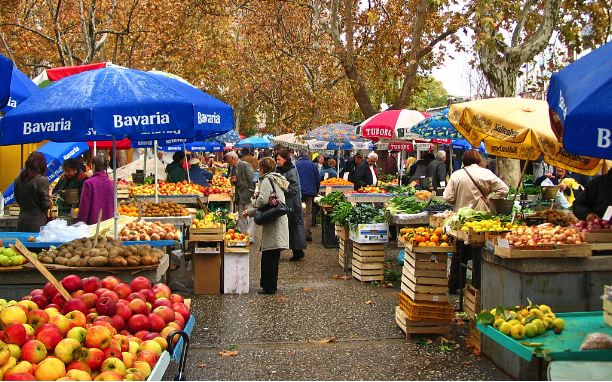To go Back at any time,
use Browser's "Previous Page"
Eventually, it was time to leave Opatija and move farther south to Split, the second largest city in Croatia. At over 200 miles, this was the longest day’s travel of the trip. More than half of it was along the coast, a scenic but twisting route. The only photo opportunities, except for rest stops, were out the coach window as we traveled --- never the best way to get good shots. A few that turned out alright are shown below.
Of all the thousand or so islands off Croatia’s coast, this barren hunk of rock has a notorious history. When Tito broke with the Soviet Union in 1948, he set up an island jail for communists whose loyalty to him was in question. Over a period of five years, 15,000 communists were “re-educated” through forced labor in the island’s quarry:
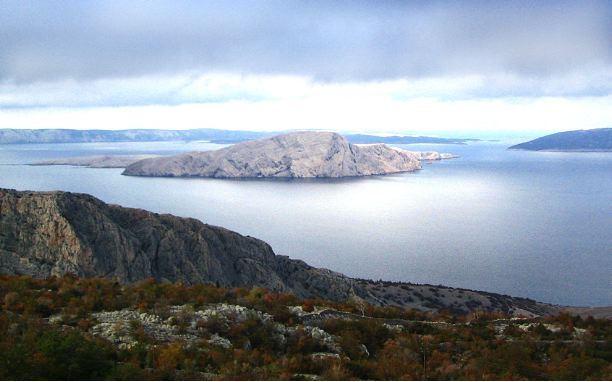
Around another curve in the road, this photo is of a real place though it appears remarkably like a toy town:
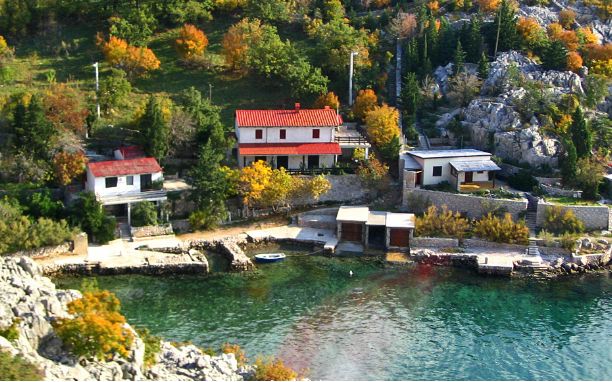
Passing Paklenica National Park, another destination for our next visit to Croatia:
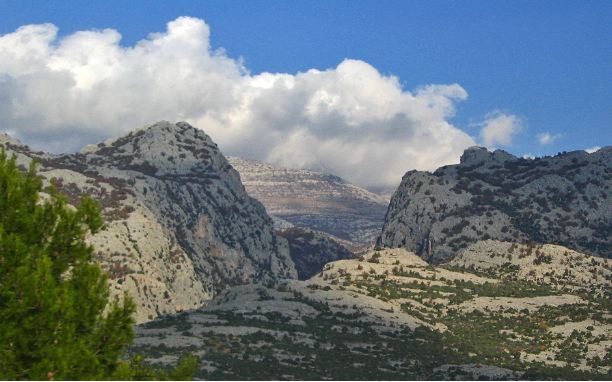
Seen from a rest stop, the impressive arched bridge over the Krka River (near Sibenik):
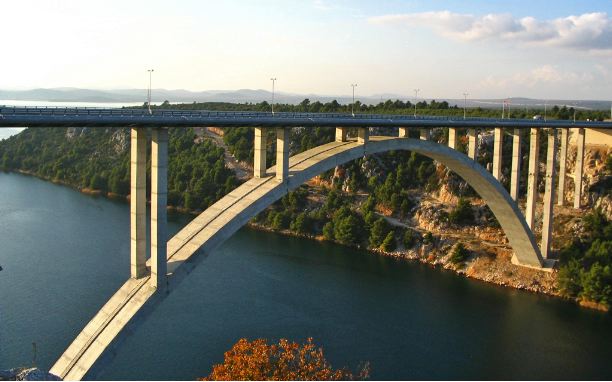
Off to the right of the bridge is the attractive, one-street town of Skradin:
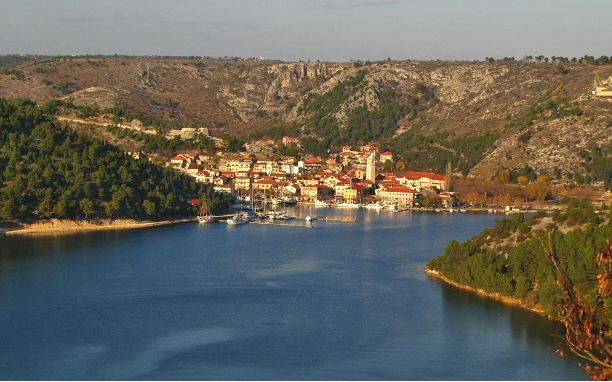
After arriving in Split in late afternoon and getting settled into our hotel, walking was our highest priority. With some directions from our guide, we set off for a sneak preview of Split’s greatest single attraction, Diocletian’s Palace. (Our official tour would be the next morning.)
Roman Emperor Diocletian was born in Dalmatia, the son of slaves, but quickly proved himself in the Roman military. He eventually became Emperor at age 39 and ruled for 21 years. Toward the end of his reign, he did something remarkable for a Roman Emperor: he planned his retirement! Not far from his birthplace, he had his dream home constructed, completing it just in time for retirement in 305 A.D. Here is an artist’s rendition of its finished appearance:
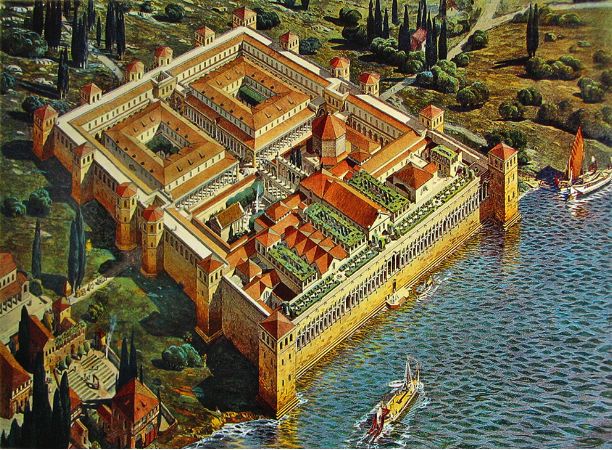
Obviously, this was no ordinary retirement home. In addition to palatial apartments, it held the infrastructure for a Roman garrison and facilities for an elaborate court. It measured over 650 feet wide by nearly 800 feet deep. The 6 foot thick walls stood 82 feet high!
We entered Diocletian’s Palace on the south side, which once fronted the Adriatic (but not today due to landfill). The so-called Bronze Gate on that side provides access to the “basement” level:
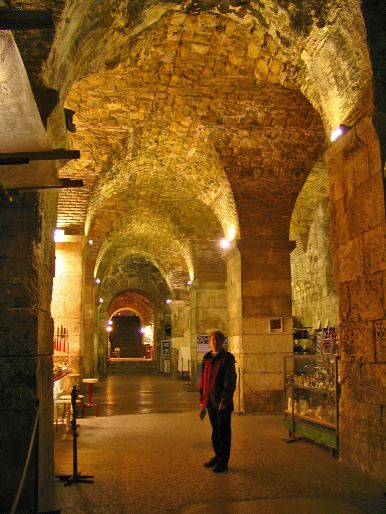
Built merely to support the Palace up above, the basement has never been lived in. For centuries it was a repository for debris and frequently wet with rain water. Not until 1956 was it explored! Now, large tracts have been cleared out and opened to the public. The basement has proven particularly valuable as an exact mirror of the living quarters that once stood above it.
At the far end of the passage behind Patty (photo above) is a stairwell which leads up and out to the Peristyle, the central courtyard of the Palace complex. This next photo was taken in the Peristyle, looking back toward that stairwell:
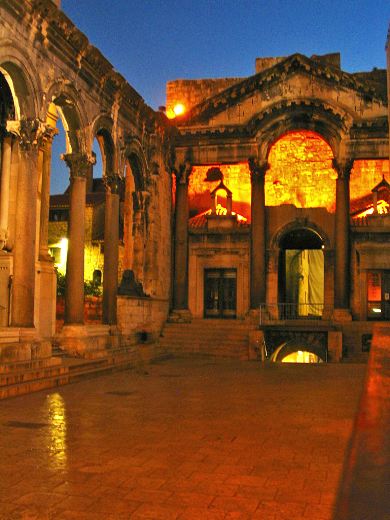
Editor’s note: This photo is a time exposure made at twilight. Apparently, the long exposure picked up the sky’s light blue and amplified it. It was not added in later.
To the left (or east) of the Peristyle is an octagonal mausoleum where Diocletian’s body rested for 170 years after his death. Following the disappearance of his body, the mausoleum was converted into the Cathedral of St. Domnius and, eventually, a six-story campanile was added:
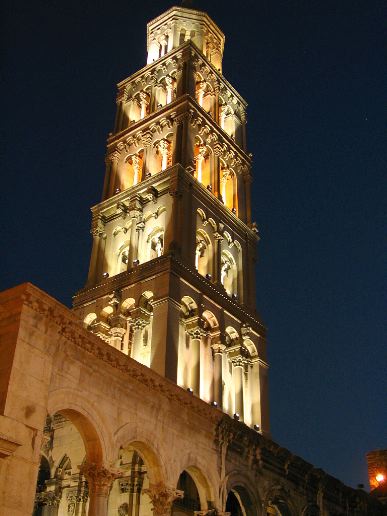
Here’s a side view of the Peristyle looking west:
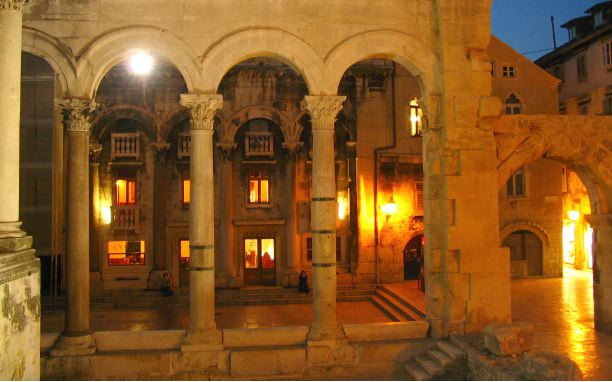
Clearly, this structure of antiquity is not an archeological site. It has been lived in continuously since Roman times, gradually transformed into a labyrinth of houses, tenements, businesses and churches by various people who arrived after the Romans departed.
On the far right in the photo above, the brightly lit passage is the main east-west hall of the Palace. Near those lights is a bank, ordinary except that it is in Diocletian’s Palace. Peering through its window (during business hours), a passerby can appreciate how buildings have been formed right around what the Romans left:
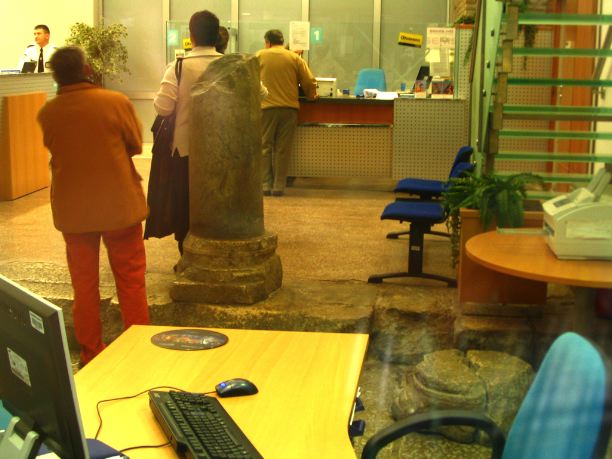
Back to our twilight tour, this is the Palace’s eastern gate, viewed from inside on the main east-west hall:
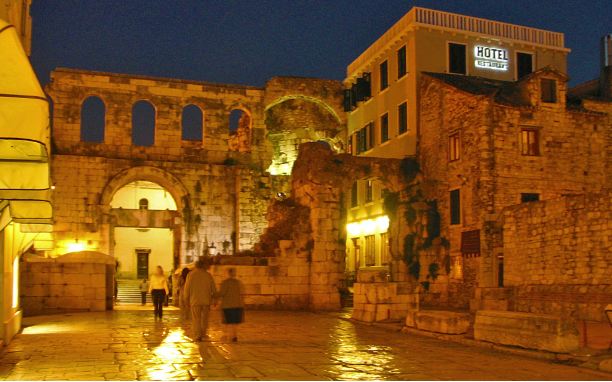
Making our way slowly back to our hotel, we found this handsome spot called Republic Square. Set back from the water, it is surrounded on three sides by city council buildings:
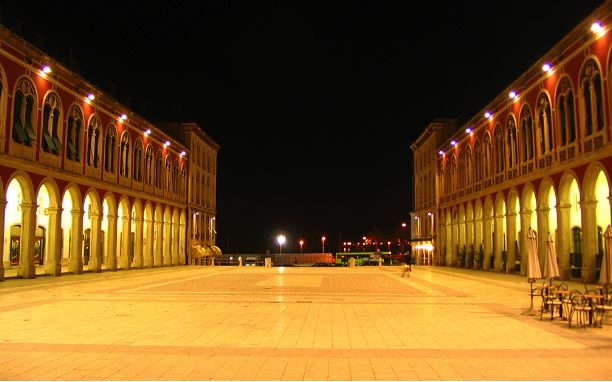
And, since we were so close to the water, a look-see at the harbor where several ferry boats were docked for the night:
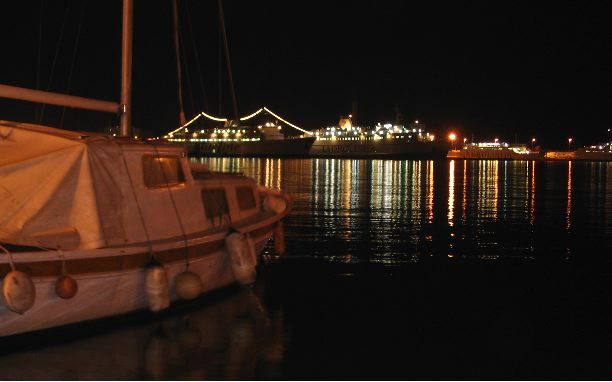
Next morning, as promised, we had a guided tour of the Palace. Above vendors’ stalls, apartment windows can be seen built right into this eastern wall:
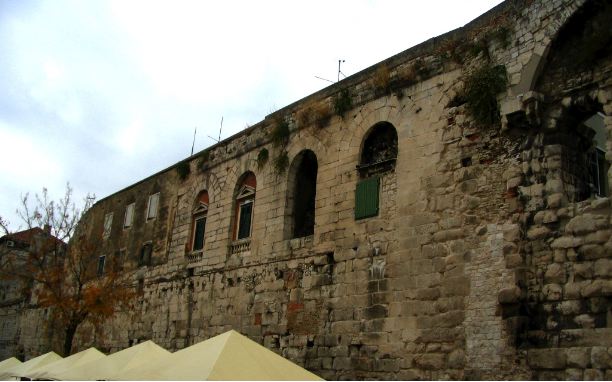
The eastern gate as seen by light of day from the outside:
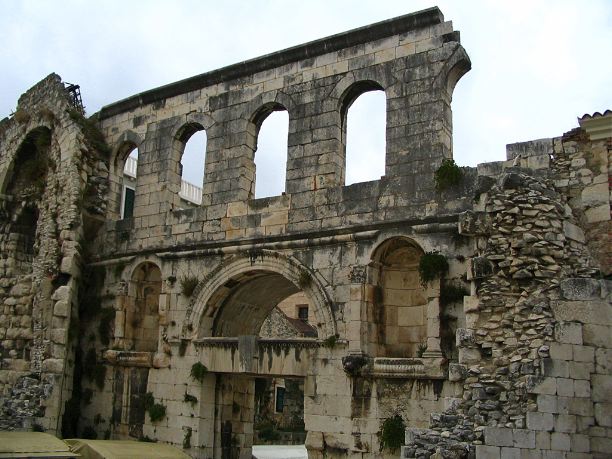
And, finally, the western gate with the slimmed-down main hall beyond:
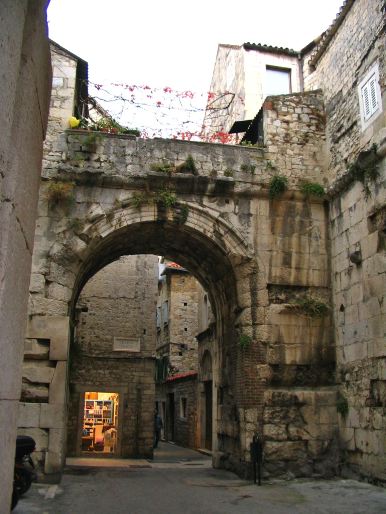
We left this awesome relic a little more informed about this capable man named Diocletian. He had, it seems, only one serious flaw: he actually believed he was God! Consequently, he could not tolerate anyone who would not worship him. He was particularly barbaric to Christians, sending many to their deaths because they would not acknowledge his Godliness. As a final note, no one knows for sure what became of his body --- our bet is that 5th century Christians had the last laugh.
Before boarding our coach, now bound for Dubrovnik, we found all the makings of a welcome lunch near this colorful open-air market:
